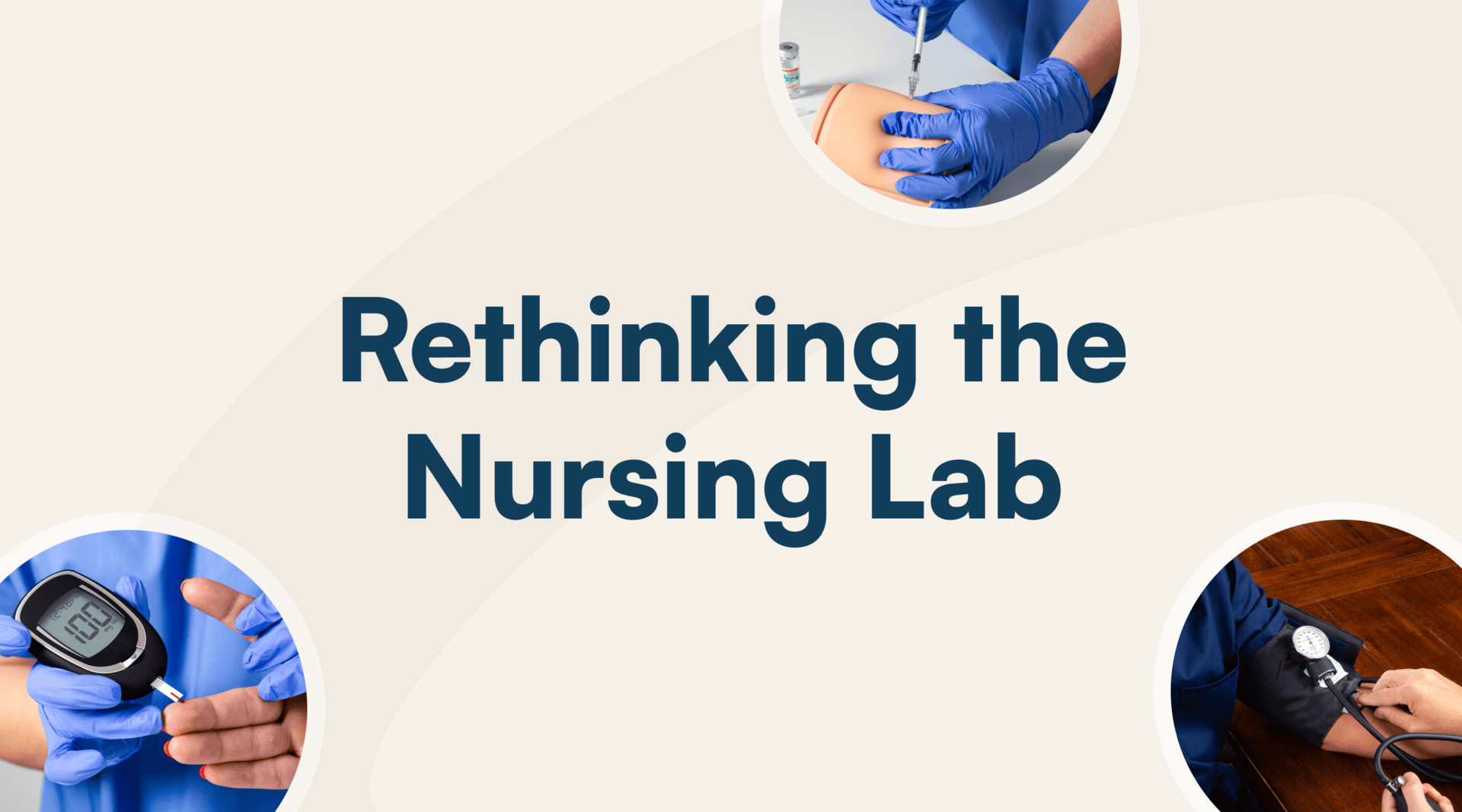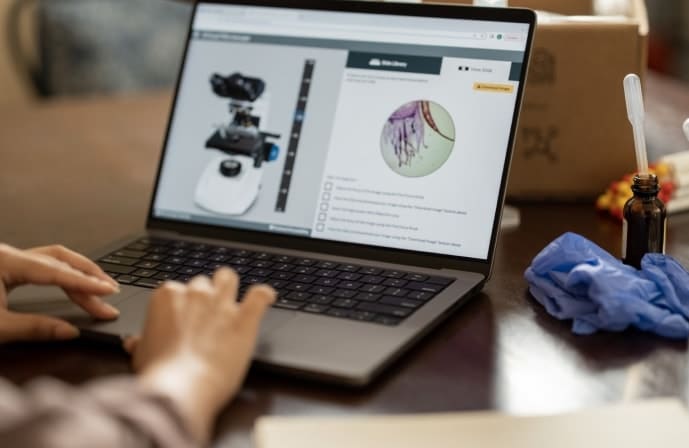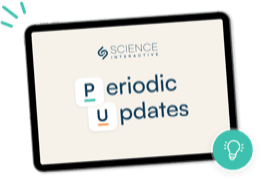A Peek Behind the Curtains from SI’s Lead Instructional Designer
Author: Corinne Brown, Lead Instructional Designer, Science Interactive
As any instructor who has taught both in-person and online will tell you, teaching & learning online feels completely different than in face-to-face learning environments. Unfortunately, all too often, online courses are still imagined, and at times even designed, as in-class courses without the important in-class parts tailored for online delivery. Queue the archive of PowerPoint presentations, a list of recommended reading, and other point & click resources that serve as the core part of the online learning experience.
With more barriers to student participation, like juggling multiple responsibilities, and the unique set of challenges a lab instructor like you faces—your courses were inherently designed to be in person—it’s not surprising your online students might struggle more than those in face-to-face courses. That is, unless you tailor instruction for online learning and tap into critical strategies that will help you create the same active learning environment on-campus students experience. In this article, we share our process, along with strategies you can apply, for developing the kind of online science lab curriculum that can better engage students and create a more authentic online lab experience.
The Secret Sauce: Uncompromising Quality
Whether your students are non-majors or someone pursuing a degree in the sciences, it’s important to provide online students with a lab experience just as rigorous and authentic as the in-person course would be. That’s why our process for developing both our hands-on and digital labs is extensive.
Phase 1: Development – All lessons are developed by subject matter experts (SMEs), who are PhD scientists and have worked in a university setting. During this phase, our SMEs conduct extensive research. They then start planning and authoring lessons for a particular discipline, which can take anywhere from 6 months to one year depending on how many lessons they set out to craft.
Phase 2: Review – Our curriculum development team conducts reviews, including testing all lab lessons for quality, accuracy, repeatability, safety & ADA compliance, and ensures — even prior to QM certification — that they align to Quality Matters standards. All lessons are reviewed by an external Board of Advisors, who are instructors currently teaching those courses.
Phase 3: QM Certification – We then put each discipline through Quality Matters certification, an extensive process that assesses the quality and rigor of our labs and requires a passing threshold of 85% or greater during official review.
Continuous Improvement – We consider the work on our curricula cyclical. That means we review lessons regularly, and work to incorporate any feedback or updates to enhance those lessons—and we make sure every lesson is designed with built-in flexibility so you can customize many of the components to suit your needs, instructional style, and course objectives.
Now that you have a broad picture of how we go about building our labs, let’s dive into the nitty gritty of that development process.
Phase 1: Developing Science Interactive Labs
One of the first steps our scientists take when setting out to develop lessons for a particular discipline is research.
- Step 1: Research starts with gathering and exploring existing curriculum from a variety of different programs, which includes syllabi reviews from two- and four-year institutions to identify the most commonly taught labs in the discipline. From this research, our internal scientists begin developing topics for online instruction, fleshing them out with measurable learning objectives that use Bloom’s Taxonomy to ensure each stage of teaching & learning is addressed. As our SME starts to develop a lesson, they’re guided by extensive content standards.
| An Overview of SI’s Content Development Standards |
| ✔Rigor: One of our most important standards is academic rigor. It’s what leads students to the understanding, knowledge, application, skills, and competencies that are required for academic success. Rigor is determined using learning objectives as well as texts and research that are typically used in the university classes that correspond with our labs. We tailor the level of difficulty to those objectives, so that major vs non-major courses will look and feel a bit different. All disciplines are aligned to Quality Matters standards. ✔Safety: All experiments are tested to ensure they can be performed safely in a home environment. We have developed a module focused exclusively on lab safety, which helps students learn and apply important lab safety standards before they even begin experiments. ✔Replicability: Procedures must be performed three times during the development process and yield results within reasonable error rates < 30%. Procedures resulting in higher error rates are supplemented with or replaced by simulations. This ensures more consistent student outcomes and helps instructors during grading. ✔Topic Selection: Lessons in the discipline cover any standard topic that might be covered at multiple colleges/universities in on-campus lab courses. Experiments must be able to be performed at home. If the topic cannot be covered using safe/cost-effective materials, a virtual exercise (e.g. simulation, interactive digital element, etc.) replaces a physical exercise. ✔Real Life Application: Experiments relate back to learning objectives and standards and apply to real life/industry. ✔Scientific Accuracy: All content is written by and peer-reviewed by scientists with high-level degrees. We also have content standards focused around assessments, materials and quantities of materials, student-supplied materials, and the level of assumed knowledge to be able to successfully complete a lab. |
Once our SMEs have their topics and objectives, we run those by members of our client community—a quick gut check never hurts—incorporating any feedback along the way.
- Step 2: Now that we have our topics and measurable learning objectives, I work with each SME to prepare an extensive project plan for each lesson. This helps us stay on track, and know who’s responsible for what, by when.
From here, things start to get pretty exciting! Real magic begins to spark, and we see the curriculum and labs take shape.
- Step 3: Using the project plan as an anchor, our SMEs simultaneously begin to plan and author the lessons, with the help of our instructional design team. While the scientists focus on lesson design, including material selection as well as protocol and assessment development, the instructional design team creates the resources and assets that support student success, including videos, images, and interactives.
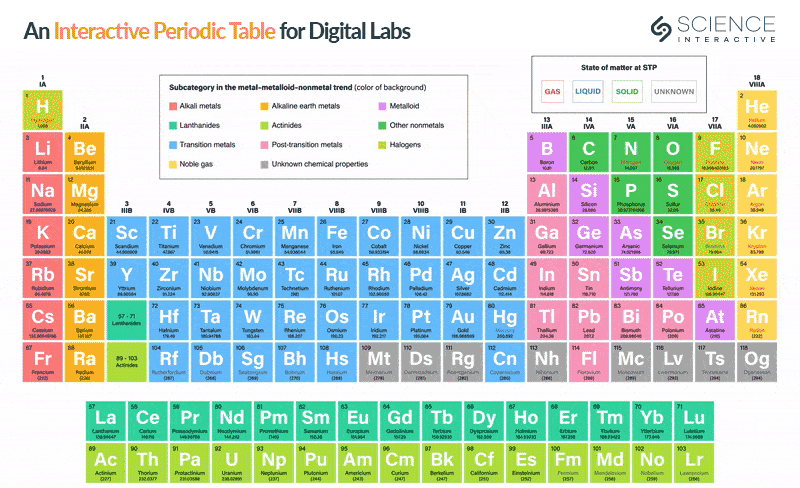
An example of a fully accessible resource our team designed during chemistry lab development, an interactive periodic table.
During this step, we’re paying attention to rigor in a couple different ways. Of course, we design our lessons to be high quality and rigorous, but we’re also cognizant of the fact that not everyone taking your course is a major or looking to pursue additional coursework or careers in that field. Our SMEs develop the curriculum with this in mind, using a practical level of assumed knowledge along with the measurable learning outcomes as a barometer for planning levels of difficulty.
| ????Things We’re Always Thinking About???? |
| Q: Should a lab be hands-on or virtual? A: Yes and Yes! We always want to find a way to give online students an authentic, campus-like lab experience. Sometimes, a lab can be too dangerous—think certain chem labs—or too expensive—think certain bio labs requiring high resolution scopes—to replicate at home. Those aspects aside, we consider the learning outcomes paramount. For example, in an Anatomy & Physiology course for majors who are pursuing a nursing degree, hands-on work is non negotiable, and we work to develop labs that will give these students an active learning experience that can mirror the experience they would have on campus. Ultimately, we want to give instructors as much flexibility as possible, so we look to build both the hands-on and virtual options that will let you create just the right blend in your course. Q: Are we addressing the 3 dimensions of the 5E model that apply directly to our labs? A: Of course! We want to be sure that with every lesson, your students Explore, Experiment, and Evaluate. That’s why we build these E’s into each lesson. Each lesson starts with content designed to help students explore and understand the lesson’s learning objectives, including procedures, experimental outcomes, and guiding questions to support students’ understanding. Students are then guided step-by-step through an experiment, gathering the data needed for analysis. Through the lab, students will work to develop scientific explanations, use evidence to demonstrate an understanding of the experiment’s outcome, and continue reflecting through our open-ended and extension questions. |
Now it’s time to get our hands dirty! During this phase, we also start to get our hands-on kits ready to support the newly developed labs. Working with our sourcing team, we decide on materials and equipment, always modifying our experiments for a home setting and keeping safety and cost top of mind. For example, a lesson on examining proteins might center on extracting casein from milk. It’s safe, hands-on, and provides students with an active learning activity that more deeply engages them with the content.
From beakers and test tubes to small-scale skeletal models, we now have the framework, bones, and guts of our lessons developed—and it’s time to start testing them.
Phase 2: Reviewing Science Interactive Labs
This is the hawk eyes stage of our process. During our review phase, we test every single component of a lesson, from content quality to repeatability, accessibility, and the student experience.
- Step 1: We first conduct a SME peer review. Another scientist from our team will go through each newly developed lesson, using a set of guidelines to evaluate the lesson and provide feedback. This SME is assessing against our content development standards, looking for accuracy, repeatability, and safety. After that feedback is addressed, the lessons make their way to our instructional design team.
- Step 2: Instructional designers now test each lesson for quality and ADA compliance. During this step, our ID uses a 7-page checklist that evaluates everything from learning objectives, time allocation for each part of a lesson (Exploration, Experimentation, Evaluation), accessibility of each piece of media and instructional resource meant to guide students, as well as the assessments & Test Your We also test the user experience for each lesson because we think it’s important to understand how a student would experience this lesson: Is the guidance clear? Did I get lost? Are transitions smooth?
- Step 3: We’re now ready to put our lessons before our external Board of Advisors, who are all active science instructors with experience teaching online labs. They are reviewing the content for accuracy and educational value to ensure our curricula meets the same standards of rigor as on-campus courses. Each lesson is reviewed by at least 3 instructors currently teaching that course. They use a rubric to assess the lessons, and then based on that feedback, we work to incorporate changes that will further elevate the labs.
- Step 4: After a thorough technical review that is intended to provide an additional layer of clarity and overall polish to our lessons, we move the lessons into final review by our Chief Academic Officer.
If this sounds like a lot of reviews and time, that’s because it is. We take great pride in the quality of our curricula because we want you to be able to more easily incorporate engaging hands-on and virtual lab experiments into your online labs courses—without having to worry about sourcing, quality, or ensuring students have access to the right materials.
In the end, what we hope is clear is that Science Interactive’s library of curricula is a team sport. Our entire team of scientists, instructional designers, Board or Advisors, hands-on kit specialists, and members of the SI community, who educate us daily on their needs, play a critical role in the development of each discipline’s curriculum.
Phase 3: Certifying Science Interactive Labs
But wait, there’s more! While each lesson is already aligned to Quality Matters standards, we then pursue QM certification.
The reason? It goes back to that principle of uncompromising quality. QM serves as a sounding board and third-party validation of our own process for developing and reviewing curricula. The certification marks our commitment to helping online instructors create a learning environment focused on quality, engagement, and student success. Like the institutional rubrics, the standards for publishers like us center on course design but place greater emphasis on the quality of content. There are 41 standards to meet in the HE Publisher Rubric that fall into the following categories:
- Course Overview and Introduction
- Learning Objectives (Competencies)
- Assessment and Measurement
- Instructional Materials
- Course Activities and Learner Interaction
- Course Technology
- Learner and Instructor Support
- Accessibility and Usability
Each and every one of Science Interactive’s hands-on and virtual labs has been reviewed and certified—the most of any provider. That means with more than 450 lessons across 11 different disciplines, you can continue to be confident that the content you’re using is teaching the critical skills and concepts online students need to achieve learning outcomes and course competencies.
“I developed the first online biology courses, nearly ten years ago at Century College. I’ve gone through the rigorous QM certification review process for two of my online biology courses, which include hands-on labs. I use Science Interactive for these, and having their labs QM certified saves time and effort for instructors who want to get their online courses certified and provide students with the same high quality, engaging, hands-on learning experience as on-campus labs.”
– Pamela Thinesen, biology instructor at Century College
An Authentic Online Lab Experience for Students
My hope is that this journey through how we develop our curricula has painted a clearer picture of both our process and commitment to quality. We want instructors to have the right tools and resources to deliver an engaging online learning experience that supports student success, without sacrificing the quality of an in-person learning experience or the time they could be spending on instruction and feedback.
Courses that leverage immersive, high-quality lab experiences and that use technology to sustain ongoing feedback and collaborative learning will help you drive an online learning experience just as meaningful and authentic as traditional F2F learning. If that sounds like a journey you’d like to join us on, our team would love to learn more about how we can best support your needs.
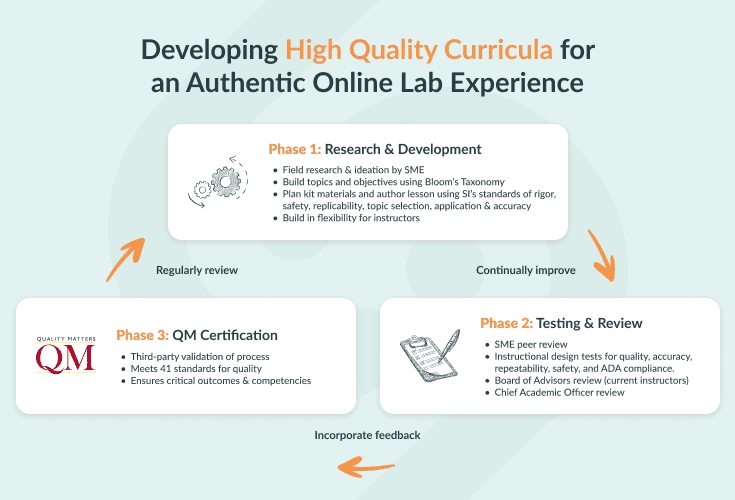
Discover more articles
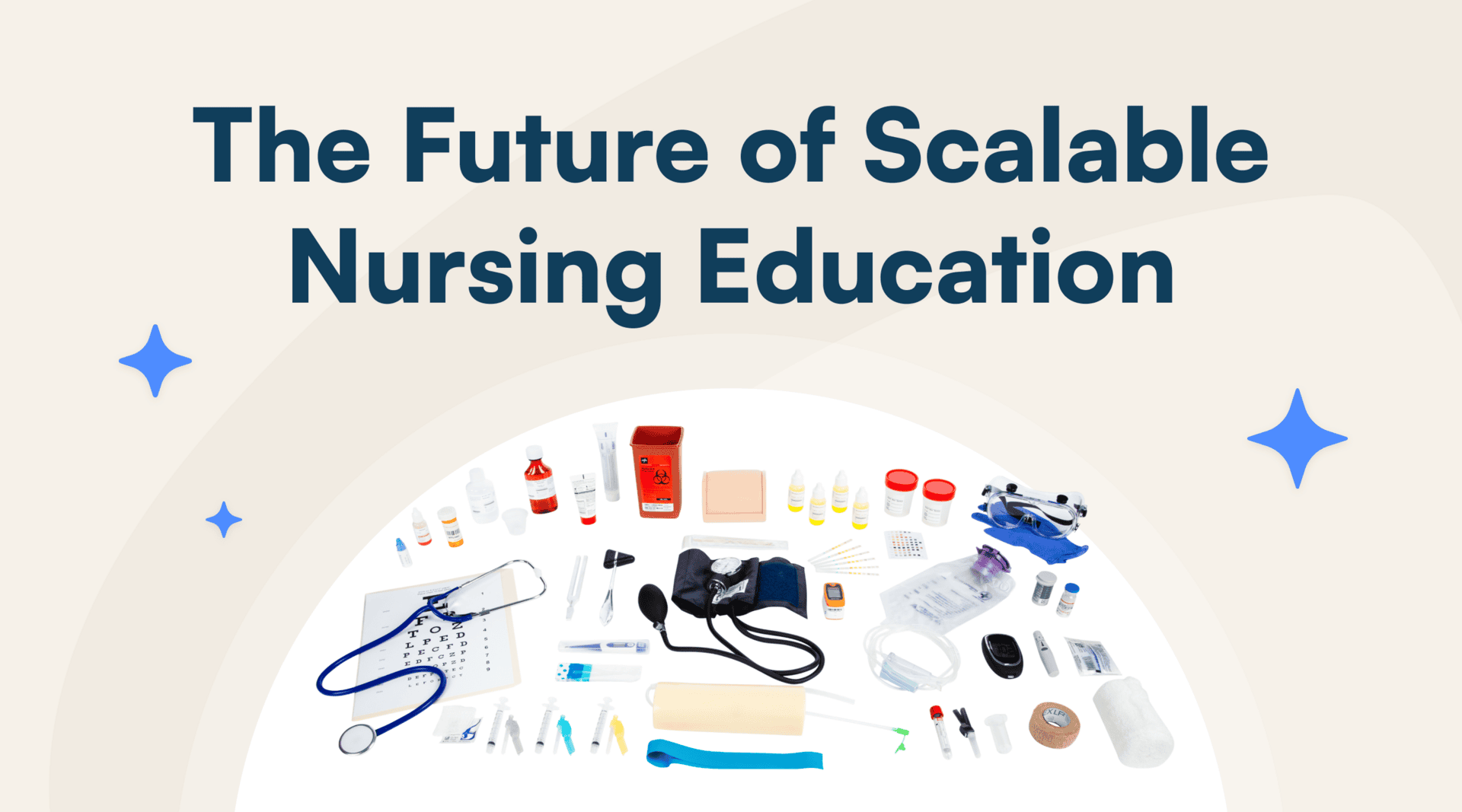
Science Interactive Launches New Nursing Fundamentals
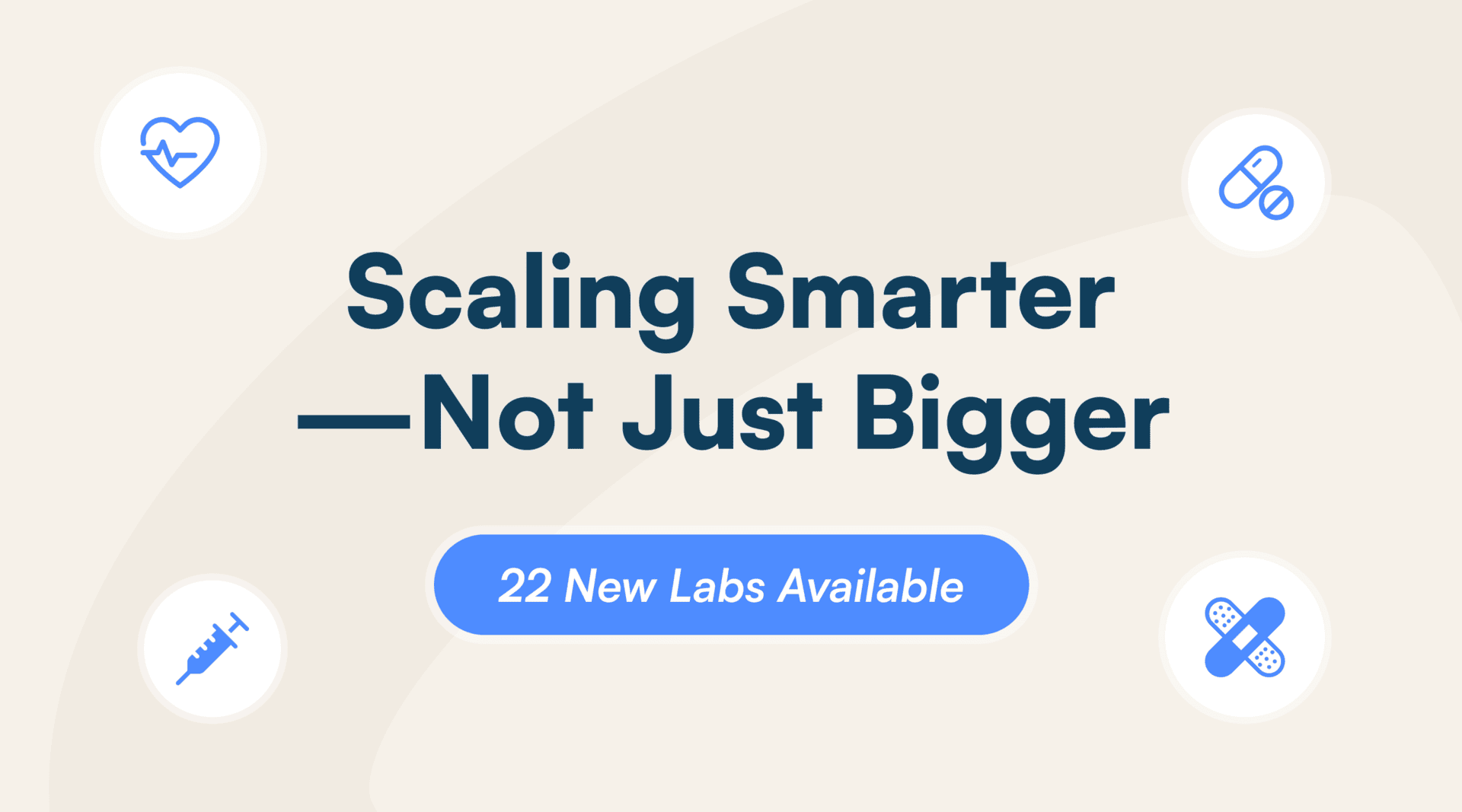
What Clinical-Ready Actually Looks Like (And How to Get There Sooner)
